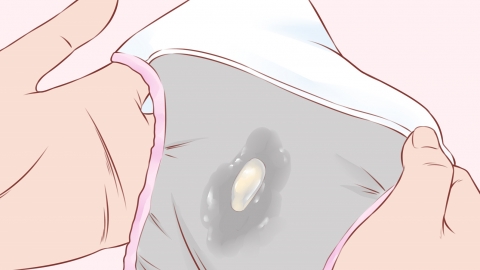What medication should be taken for abnormal brown vaginal discharge?
Under normal circumstances, the main causes of brownish abnormal vaginal discharge include ovulation bleeding, slight bleeding before or after menstruation, bacterial vaginosis, cervicitis, and endometritis. Patients should follow medical advice and select appropriate medications based on their specific conditions. Detailed analysis is as follows:
1. Ovulation Bleeding
During ovulation, a temporary drop in estrogen levels can cause minor shedding of the uterine lining, resulting in brownish vaginal discharge. This typically lasts 2–3 days and is not accompanied by other discomforts. It is a physiological phenomenon that does not require medication. Maintaining external genital hygiene and avoiding strenuous exercise are sufficient.

2. Slight Bleeding Before or After Menstruation
Premature minor shedding of the endometrium before menstruation or residual small amounts of menstrual blood at the end of the period may cause brownish discharge. This is a normal physiological occurrence and does not require medication. During this time, it is important to stay warm, change sanitary products frequently, and avoid tub baths.
3. Bacterial Vaginosis
An imbalance in vaginal flora—such as an overgrowth of pathogenic bacteria like *Gardnerella*—can lead to inflammation, causing increased vaginal discharge that appears brownish and has a fishy odor. Treatment under medical guidance may include metronidazole suppositories, clindamycin phosphate vaginal gel, or tinidazole tablets to improve symptoms.
4. Cervicitis
Inflammation of the cervix caused by pathogen infection or mechanical injury can result in congestion and bleeding of the cervical mucosa, leading to brownish discharge accompanied by lower back or sacral pain. Under medical supervision, oral medications such as doxycycline hydrochloride tablets, azithromycin dispersible tablets, or cefuroxime axetil tablets may be used to reduce cervical inflammation and control bleeding.
5. Endometritis
When bacteria ascend and infect the endometrium, inflammation occurs, causing congestion and necrosis of the endometrial tissue. This leads to brownish discharge along with lower abdominal pain and fever. Under medical guidance, medications such as cefixime capsules, levofloxacin tablets, or metronidazole tablets may be prescribed to control the spread of infection and relieve symptoms.
In daily life, it's important to maintain good external genital hygiene, frequently change cotton underwear, and avoid unhygienic sexual practices. Avoid strenuous physical activity during menstruation to reduce the risk of infection. Regular gynecological check-ups help detect and address issues early, lowering the likelihood of abnormal vaginal discharge.




